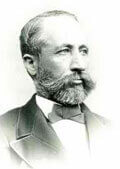the Third Week of Advent
Click here to learn more!
Bible Dictionaries
Smith's Bible Dictionary
Browse by letter: A

William Smith
Welcome to the 'Smith's Bible Dictionary', one of the dictionaries resources FREELY available on StudyLight.org!
Containing 4,640 entries cross-referenced and cross-linked to other resources on StudyLight.org, this resource can be classified as a required reference book for any good study library.
More than 4,500 subjects and proper names are defined and analyzed with corresponding Scripture references. Bible students have used "Smith's Bible Dictionary" since its introduction in the 1880s, making it a trustworthy classic.
All scripture references and reference to other entries within the text have been linked. To use this resource to it's full potential, follow all the links presented within the text of the entry you are reading.
If you find a link that doesn't work correctly, please use our convenient contact form. Please tell us the reference work title, entry title and/or number (this can be found in the address line), and a brief description of the error found. We will review and make corrections where needed.
You can also use this form if you have any suggestions about how to improve the usability of this resource.
These files are public domain.